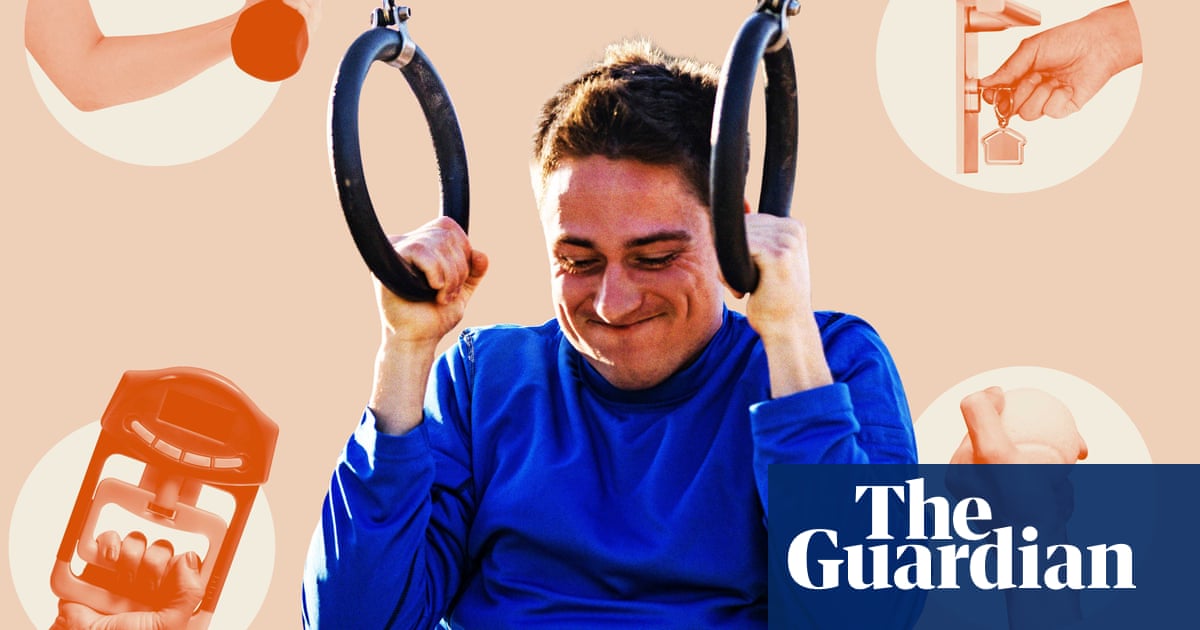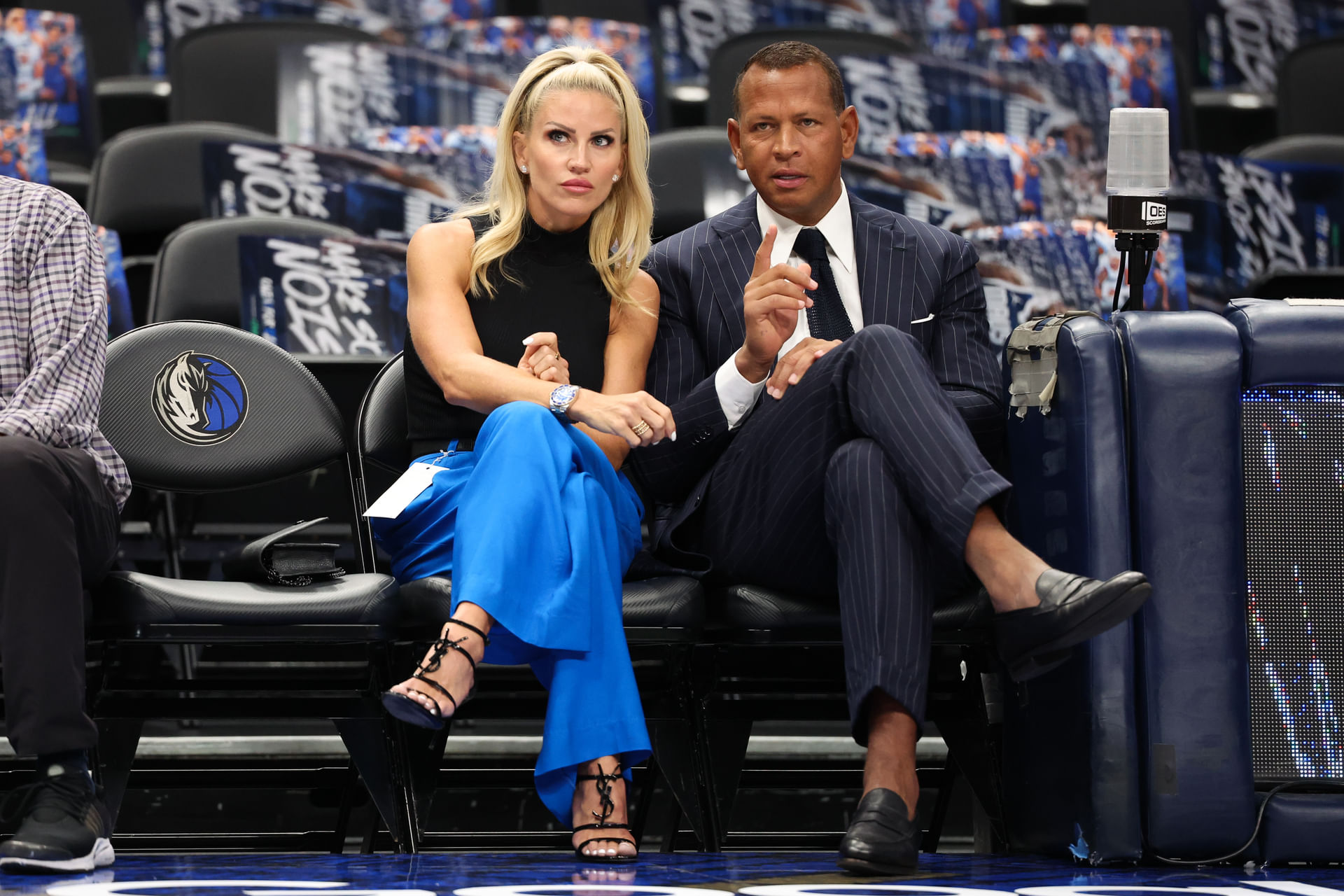Anyone who has ever dropped their phone in the toilet – and isn’t that all of us? – knows something about the importance of a good strong grip. We come into the world ready to grasp anything placed in our hands, and if we are lucky we leave it the same way. In between, grip lets us cling to our parents, hold our lovers, rock our babies. The morning I wrote this, before I was even dressed, it enabled me to strap on my watch, lock the kids out of the bathroom, wash my hands, insert my contact lenses, strip, shower, brush my teeth, take my medicine and check my phone. A few hours later, as I hung upside down on some gymnastics rings, it stopped me slipping off and cracking my head on the floor.
But you know what? This just scratches the surface. Not only does grip help you work, play and pull your trousers on in the morning; it offers an immediate insight into your health. To put it bluntly, the weaker your grip, the more likely you are to die early.
Find that hard to swallow? A study of 140,000 adults in 17 countries found that a weak grip went hand in hand with a higher risk of heart attack and stroke, and was a better guide to “all-cause mortality” than blood pressure. It is associated with osteoporosis, diabetes, rheumatoid arthritis, fall risk and obesity, as well as cognitive decline. Unsurprisingly, perhaps, it is also linked to age-related muscle loss, or sarcopenia.
For all these reasons and more, doctors often use grip strength as a quick measure of a patient’s health, including their ability to recover from surgery or live independently. “It’s a really easy thing to test,” says physiotherapist Sarah Milner. “You don’t need to hook someone up to a machine, you don’t need to look at their muscle mass, you don’t need to take their weight …”
The only real drawback is that it focuses on upper-body strength, which is why patient assessments often combine a grip test with a sit-to-stand, which gauges lower-body strength.
Grip strength reliably reflects “total body strength, neuromuscular coordination and cardiovascular resilience”, in the words of Delhi GP Ramit Singh Sambyal. He says that patients in their 50s with a surprisingly weak grip often report fatigue, slower recovery after minor illnesses and a higher percentage of body fat. Conversely, those with a stronger grip tend to have better functional fitness and recover more quickly.
To be clear, no one is saying a weak grip will kill you directly, in the way that heart failure will. But it usually indicates problems far beyond your hands and wrists. We don’t yet have the scientific studies to back this up, but it seems reasonable to assume that anything that improves it will also improve your overall health. It will certainly improve your quality of life.
Some weakening of the grip is inevitable as we get older. “From about 50, muscle mass and nerve function gradually decline,” says Samantha Shann, occupational therapist at Oak Tree Mobility and the president of the World Federation of Occupational Therapists. “But staying active – particularly with meaningful and hands-on tasks – helps slow the process.”
Actually, we should be talking about grips rather than grip. As well as crush grip, which lets us shake a hand or hold a dumbbell, we mostly rely on pinch grip (think of turning a key or holding a plate) and support grip (to carry something like shopping), though there are enough subcategories to make your head spin. The more precise types may need to be trained with more delicate exercises, but in general what strengthens one grip also benefits the others, by working the flexor muscles that clench our fingers and thumbs, and the extensor muscles that straighten them, as well as our wrists and forearms and sometimes our upper arms and shoulders, too.
How do you know whether all this needs attention?
Sometimes looking is enough. Lucy Joslin teaches calisthenics, which features a lot of dangling from rings or pull-up bars, and handstands, where often the only thing keeping you balanced is the way your hands grip and flex against the floor. Every class begins with exercises for the hands, wrists and shoulders – bending them, stretching them, putting weight on them, frequently in quite uncomfortable positions. “I look at people’s hands all day long,” she says. “You can tell unconditioned hands from conditioned hands – the people who are in touch with their fingertips and the people who are not. And then they go to grip a pull-up bar and it’s like their hands can’t close properly. And as for hanging off the bar, which is something I take for granted … no. And it’s not just because they don’t have the strength in their shoulders.”
Milner, meanwhile, says her job has given her “monkey grip”. As a result, “I like doing bar hangs. That for me, is like, ‘Where’s my grip strength at?’ And I know that if I’m fatigued my bar hang is a piece of shit.” On a good day she can hang for 90-120 seconds.
When she told me this, I thought I’d see how long I could manage. Thanks to almost a year of calisthenics I made it to 90 seconds – but the last 45 were pretty unpleasant.
There are gentler ways of testing, though. “You can do it by squeezing a tennis ball and seeing how long you can hold your tightest grip,” Milner suggests. Do that regularly and you’ll be able to track whether your grip is improving or deteriorating.
“I encourage clients to notice how they manage everyday tasks,” says Shann. “Can they open a tight jar, wring out a cloth or carry a kettle comfortably? These are all functional ways of assessing grip.”
For a more formal measurement, you’ll normally squeeze (all right, crush) a device known as a dynamometer. You can get one of these for less than £20, though it may not be as accurate as medical-grade equipment. “Grip strength varies with age and gender,” says Shann, but broadly speaking here’s how much force you should be able to exert:
Age 18 to 25 Women 27-31kg, men 46-52kg
Age 26 to 35 Women 26-30kg, men 44-50kg
Age 36 to 45 Women 25-29kg, men 42-48kg
Age 46 to 60 Women 20-28kg, men 35-47kg
Age 61 to 75 Women 18-26kg, men 30-45kg
Over 75 Women 16-20kg, men 25-40kg
“While everyone’s baseline differs,” Shann says, “these numbers can highlight the need for support or intervention. It could mean a person is at risk of frailty, especially if combined with fatigue or reduced mobility.”
Remember what I said about accuracy? Naturally, I had to try a dynamometer myself. The first one I bought gave me a reading of 39.1kg, which as a 61-year-old I should have been happy with. It still felt a little low given how much time I spend hanging from things. So I got another and squeezed it all the way to 46.6kg. I’m not sure which reading is more realistic, but I know which is better for my ego. Still, to put both into proportion, the world-record squeeze is more than 170kg.
But what can you do if you’re not happy with your result?
“I often recommend turning everyday activities into opportunities for strengthening,” says Shann. “Tasks like cooking, gardening or carrying laundry all challenge grip in a natural and functional way. Structured exercises can be added in when more support is needed, such as a tennis ball squeeze (hold for three seconds, release, and repeat 10 times per hand, daily) or a towel twist (roll a towel and twist it in opposite directions, for one or two minutes a few times a week). I usually tell clients they can expect to notice small improvements in four to six weeks if they’re consistent.”
And those little gadgets where you try to force two handles together with your hand, against the resistance of a spring? I’ve somehow accumulated five of them, rated all the way from 50lb (23kg) to 250lb (113kg). I can barely make that last one move.
Forget them, says Milner. What originally attracted me to them – that it’s so easy to crank out squeeze after squeeze after squeeze – is also what makes them dangerous. “They’re terrible,” she says. “People start using them and they give themselves some form of tendinopathy [tendon damage] from overloading. That repetitive gripping is awful.”
Better to take a less direct, more holistic approach. “When it comes to strengthening,” she says, “it’s really important to talk not just about your hand and your forearm, but about the whole kinetic chain.” This is the physios’ way of saying that everything is linked; no muscle is an island; the toe bone’s connected to the foot bone …
“The shoulder and the scapula – the shoulder blade – are intrinsically linked to grip strength,” Milner says. “So I would do things like full-body strength training or functional strength training.”
Imagine you’re in a push-up position, say. “If you’ve got your hands on the floor, and you’re weight-bearing with a flat palm, or you start doing different types of grip on the floor, you’re already strengthening your palm muscles and your forearm muscles, and you’re loading up the shoulder blade. And then you can play with taking one hand off the ground and doing shoulder taps, or doing down dogs or a high plank.
“That’s going to strengthen your wrists and hand muscles, but it’s also going to hit you higher up the chain. It will also train your proprioception, which is basically knowing where your wrists and finger joints are in space, as well as your elbow and shoulder. And that is massively linked to strength, because if you have no idea where anything is, you’re going to really struggle to be strong in that area.”
Train your grip, in other words, by training things that aren’t obviously your grip. And throw away those squeezy things.
Grip it real good!
Six ways to improve your grip, by physiotherapist Sarah Milner
At home
Push-ups These come in many variations, so if they seem intimidating, you can adjust the difficulty by changing the angle, the position of your hands and the distribution of your weight. Start standing with your hands on the wall for a simple push exercise and progress this to the classic horizontal version on the floor. You can make this more challenging by playing with the position of your hands (wider, more narrow) and where your weight goes through (fists, just fingertips).
Wet towel wrings Soak a towel in water, then grip and twist it to wring it out. Use both hands, and twist in both directions to improve the strength of your forearm and hand flexor muscles.
Pinch grip holds Find the heaviest book in your house and take it between your fingers and thumb in a classic “pinch grip” position. See how long you can hold it. You can play with the position of your arm (by your side, out in front of your body, above your head) and how bent or straight your elbow joint is.
In the gym
Dead hangs Try to hold on to a bar as long as your grip will allow you. You can change your hand position to challenge different hand and forearm muscles (neutral, supinated or pronated). This is a great exercise that helps activate your shoulder muscles, which are so important for grip strength. (Confused about those hand positions? If you stand with your arms by your sides, thumbs facing forwards is neutral. Palms facing forwards is supinated. And palms facing back is pronated.)
Barbell bent-over rows This is a great multi-muscle exercise; the heavier you go, the harder your arm muscles, shoulders, shoulder blades and core have to work. Make sure you progress the weight steadily, and get a professional to guide you if you’re concerned about your form. You can use either a pronated or a supinated grip.




